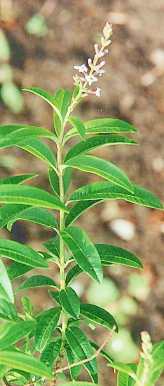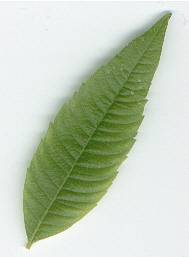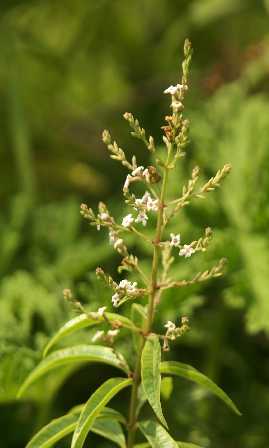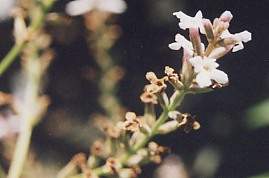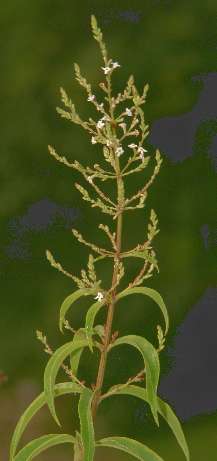
|
| Flowering branch of lemon verbena |
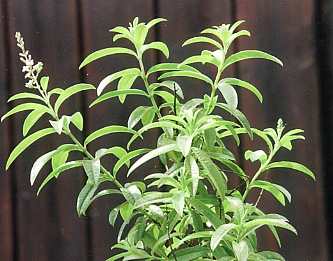
|
| Lemon verbena plant |
Only 100 years ago, lemon verbena was a common ornamental in European gardens, but today it is rarely planted. The herb’s culinary merits have also fallen into oblivion; to be fair, however, it should be stressed that lemon verbena has never been an important herb in European cookery.
Like many other lemon-
Lemon verbena, like lemon balm
(which it surpasses by far), has a strong affinity to fresh
fruits: The subtle lemon flavour
nicely emphasizes and reinforces the fruit’s natural aroma.
Thus, lemon verbena can be used to give fruit salads an unusual
touch, or a chopped leaves can be sprinkled over a fruit bowl,
or freshly prepared fruit juice can be garnished with one
or two leaves of lemon verbena. Other applications include
fruits sorbet or any processed dessert based on fruits, e. g.,
ice cream (see vanilla).
